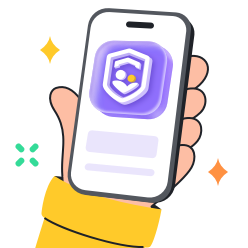La recente comparsa della realtà virtuale (VR) ha rivoluzionato l’industria dei giochi coinvolgendo giocatori di tutte le età, dagli adulti ai bambini. Oggi, le generazioni più giovani possono tuffarsi in mondi educativi ed entusiasmanti attraverso i giochi Oculus per bambini, che offrono esperienze coinvolgenti e divertenti. La piattaforma Oculus VR offre possibilità illimitate ed entusiasmanti combinando opportunità educative e di intrattenimento. Tuttavia, i genitori devono garantire che queste esperienze siano piacevoli e sicure. La giusta selezione di giochi Oculus può garantire che i bambini accedano a contenuti coinvolgenti e adatti all’età, stimolando la loro creatività e quindi migliorando l’apprendimento e promuovendo le attività fisiche.
Cosa sono i giochi Oculus?
I giochi Oculus sono giochi di realtà virtuale (VR) giocati su visori Oculus, disponibili in vari modelli come Oculus Quest, Oculus Rift e Oculus Quest 2, tra gli altri. Questi giochi includono un'esperienza coinvolgente che accompagna il giocatore attraverso un ambiente virtuale 3D che consente l'interazione utilizzando il visore VR e i controller di movimento. Inoltre, i giochi per bambini sono di vario tipo: educativi, puzzle, avventura, fitness e sociali. "The Climb" è un bel gioco di avventura Oculus per bambini. Il gioco offre un'emozionante simulazione di arrampicata in cui i giocatori possono scalare enormi scogliere e altre strutture per mettere alla prova la loro destrezza e i loro nervi.
Vantaggi dei giochi VR
I giochi di realtà virtuale (VR) rappresentano oggi il modo più creativo e innovativo con cui i bambini possono esplorare, imparare e giocare. Immergendo i bambini in ambienti 3D molto interattivi, questi giochi offrono un'esperienza unica che aiuto a migliorare vari aspetti del loro sviluppo e benessere generale. Al di là del semplice intrattenimento, i giochi VR offrono valore educativo e un’opportunità di interazione sociale e fisica.
Apprendimento migliorato.
I giochi VR forniscono un'esperienza educativa coinvolgente e interattiva che rende l'apprendimento più efficace e coinvolgente. I bambini possono esplorare comodamente siti storici, impegnarsi in concetti scientifici o persino imparare nuove lingue in modo avventuroso.
Miglioramento delle capacità motorie.
La maggior parte dei giochi VR richiedono un controllo preciso e movimenti fisici, che i bambini aiuto sviluppano capacità motorie, destrezza fisica generale e coordinazione occhio-mano.
Maggiore creatività.
Molti giochi VR incoraggiano la risoluzione creativa dei problemi e il pensiero creativo. I bambini ora possono progettare e costruire mondi virtuali, esplorare le loro capacità immaginative e sperimentare vari scenari in un modo che i giochi tradizionali non possono consentire.
Interazione sociale.
I giochi VR multiplayer offrono ai bambini l’opportunità di interagire con i loro coetanei in un ambiente virtuale, favorendo così il lavoro di squadra, la collaborazione e le abilità sociali. Queste interazioni sono particolarmente utili per i bambini che trovano impegnativo impegnarsi in interazioni sociali faccia a faccia.
Esplorazione sicura.
I giochi VR consentono ai bambini di esplorare e sperimentare ambienti che altrimenti sarebbero pericolosi e difficili da visitare in tempo reale. Dagli oceani profondi allo spazio, i giochi VR sono un modo sicuro per soddisfare gli spiriti avventurosi e curiosi dei giocatori.
Attività fisica.
Alcuni giochi VR enfatizzano l’esercizio fisico, aiuto così i bambini a rimanere sani e attivi. I giochi implicano attività come sport, danza o altre attività fisiche.
Concentrazione e focalizzazione.
I giochi VR di solito richiedono concentrazione e attenzione prolungate, che a loro volta aiuto a migliorare le capacità dei bambini.
Benefici terapeutici.
I giochi VR offrono grandi benefici terapeutici, soprattutto ai bambini con sfide come fobie, ansia o disturbi dello sviluppo. L'ambiente controllato nella realtà virtuale li aiuto ad affrontare i loro problemi in modo solidale e sicuro.
Standard per giochi VR sicuri e divertenti per bambini
Per quanto i giochi VR offrano vantaggi coinvolgenti ai giocatori, ci sono, tuttavia, cose da considerare quando si seleziona un gioco VR per la sicurezza dei tuoi figli durante il gioco. Queste aree degli standard includono quanto segue ma non limitato a;
Bilancia divertimento e sicurezza con strumenti affidabili
Adeguatezza all'età. Considera il sistema di classificazione dei giochi consolidato come il Pan European Game Software Rating Board o l'Entertainment Software Rating Board.
Temi nonviolenti. Assicurati di dare priorità ai giochi che promuovono l'educazione, la creatività, l'esplorazione e le interazioni sociali positive rispetto a temi maturi e violenti.
Valore educativo. Scegli giochi che offrano opportunità di apprendimento come sviluppo di competenze, contenuti educativi e sfide per la risoluzione dei problemi.
Facile da usare. Scegli giochi VR che non siano solo intuitivi ma anche semplici da controllare per i bambini.
Tutorial guidati. Scegli giochi che offrano una guida per aiuto i bambini a imparare a giocare a questi giochi senza provare frustrazione valutazione d.
Difficoltà di gioco regolabile. Cerca giochi che consentano ai giocatori di regolare il livello di difficoltà per adattarsi ai progressi e al livello di abilità dei bambini.
Controllo dei genitori. Garantire che i sistemi VR e di gioco offrano il controllo parentale gestito dagli aiuto tempo sullo schermo e può limitare l'accesso a determinati contenuti riservati.
Controlli sulla privacy. Assicurati che i giochi supportino severe politiche sulla privacy per salvaguardare le informazioni personali di tuo figlio.
Impostazioni di comfort. I giochi VR dovrebbero includere impostazioni di comfort per aiuto a ridurre la chinetosi e garantire un'esperienza confortevole per i bambini.
Incoraggiare i movimenti. Seleziona giochi che incoraggiano l'attività fisica per aiuto i tuoi bambini a rimanere attivi mentre giocano.
Garantire pause regolari. I giochi dovrebbero avere pause regolari dalle attività fisiche per prevenire l’affaticamento fisico e l’affaticamento degli occhi e garantire un sano equilibrio tra riposo e gioco.
I migliori giochi VR per bambini disponibili su Oculus
Ci sono parecchi giochi VR disponibili oggi per i bambini. Ecco una ripartizione dei primi 10 Giochi VR per bambini.
1. Simulatore di lavoro (età consigliata: adolescenti dai 13 anni in su)
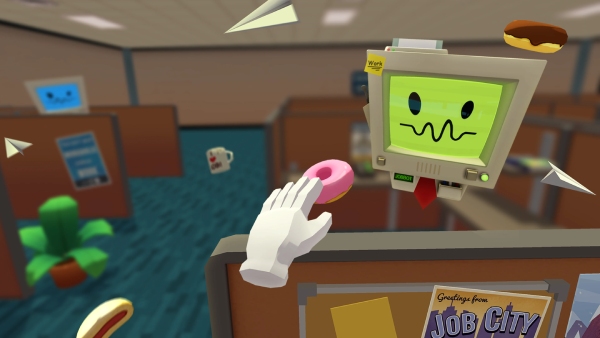



Descrizione: È un mondo stravagante in cui robot e macchine hanno preso il posto dei lavori umani. I giocatori rivivono i vecchi “giorni di gloria” semplicemente simulando vari compiti come essere un meccanico, cucinare o lavorare in ufficio.
Dinamica di gioco: il gioco riguarda la sperimentazione e il divertimento sciocco. Il giocatore può gettare il cibo in cucina, riparare un'auto utilizzando strumenti stravaganti o persino impilare forniture per ufficio.
2. Fruit Ninja VR (età consigliata: Teebs 13+)
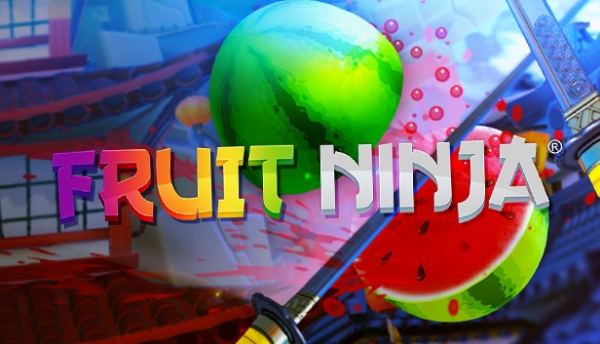



Descrizione. Il classico gioco VR di affettatura della frutta ottiene il suo aggiornamento VR
Dinamica di gioco: taglia e taglia a cubetti i tuoi frutti succosi che volano da tutte le direzioni. Guadagni più punti per le combo e fai attenzione alle diverse bombe. È un ottimo gioco per rendere i bambini attivi e coordinare gli occhi.
3. Angry Birds VR: Isola dei Porci (età consigliata: tutte le età)
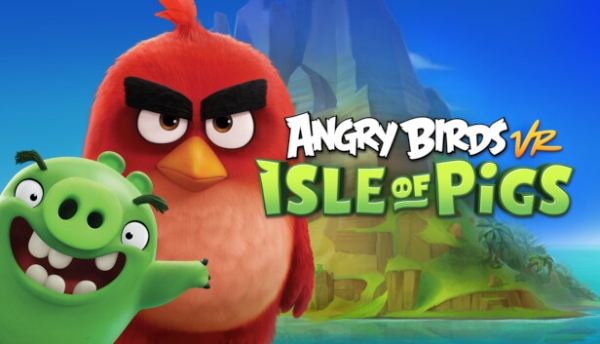



Descrizione: Entra nel mondo di Angry Birds e abbatti quei fastidiosi maiali da una prospettiva in prima persona.
Dinamica di gioco: usa i colpi più leggeri per lanciare gli uccelli contro le strutture create dai maiali. Ciò causerà un caos esilarante. La versione VR offre una visione nuova anche della minima azione.
4. Valzer del mago (età consigliata: adolescenti dai 13 anni in su)
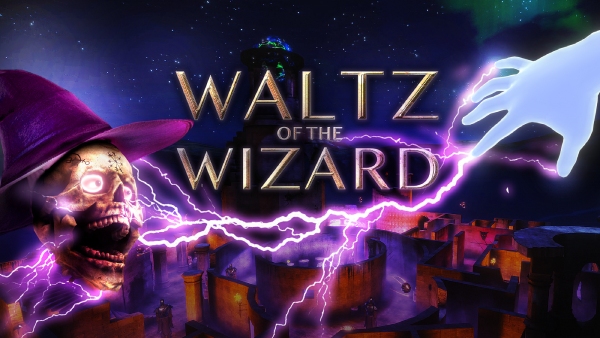



Descrizione: È tempo di diventare un potente mago in un mondo fantastico. Puoi padroneggiare come usare diversi incantesimi attraverso semplici movimenti fisici.
Dinamica di gioco: dovrai raccogliere ingredienti, imparare varie ricette di pozioni e lanciare incantesimi tramite il movimento, come disegnare simboli o calderoni nell'aria. È un'esperienza speciale e coinvolgente.
5. Giù nella tana del coniglio (età consigliata: tutte le età)
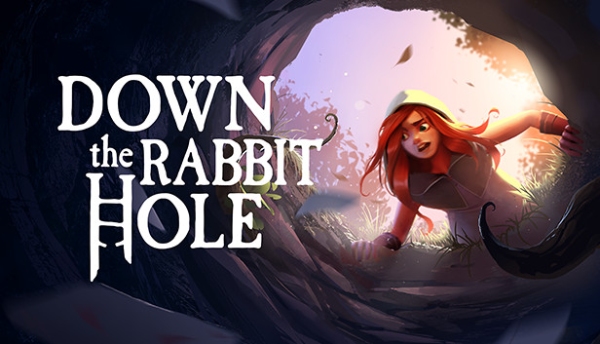



Descrizione: Tuffati in una fantastica avventura ispirata ad Alice nel Paese delle Meraviglie.
Dinamica di gioco: esplora il meraviglioso mondo magico pieno di sfide ed enigmi. Interagisci con vari personaggi bizzarri e risolvi problemi tramite i controlli VR.
6. Acron: L'attacco degli scoiattoli (età consigliata: tutte le età)
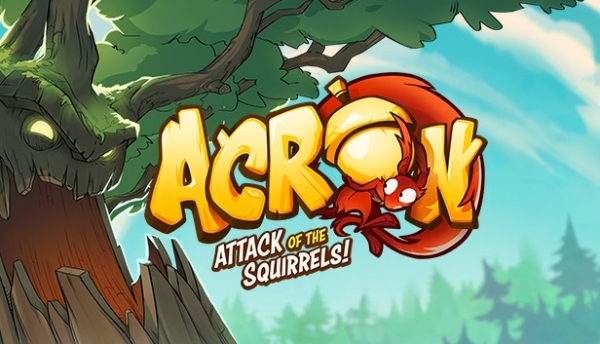



Descrizione. Difendi la tua ghianda da un orribile attacco da parte di un'orda di scoiattoli dispettosi.
Dinamica di gioco: il gioco ti consente di costruire catapulte, trappole e difese per impedire agli scoiattoli dispettosi di distruggere o rubare la tua ghianda. È un fantastico e divertente gioco di difesa della torre radicato in un affascinante ambiente forestale.
7. Sala giochi (età consigliata: adolescenti dai 13 anni in su)
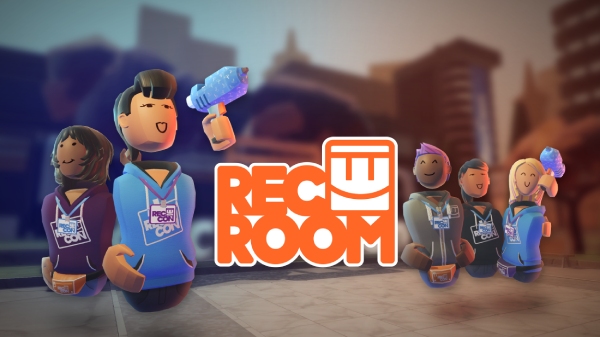



Descrizione. Una piattaforma social VR con un'ampia gamma di attività e giochi creati dagli utenti.
Dinamica di gioco: il gioco Rec Room offre infinite possibilità per varie attività di gioco. I giocatori possono esplorare parole create dalla comunità, giocare a paintball e partecipare a eventi virtuali. Tuttavia, l’ampia base di utenti richiede il controllo parentale per i tuoi giovani adolescenti.
8. Bogo (Età consigliata: adolescenti dai 13 anni in su)
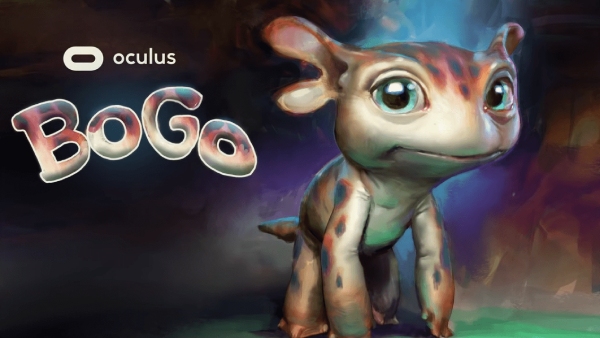



Descrizione: Risolvi enigmi complessi con un compagno robot avanzato e stravagante al tuo fianco.
Dinamica di gioco: tu e Bogo siete al vostro fianco per lavorare insieme per attivare interruttori, manipolare oggetti e affrontare alcune sfide sconvolgenti. È un ottimo gioco per la comunicazione e il lavoro di squadra.
9. La curiosa storia degli animali rubati (età consigliata: tutte le età)
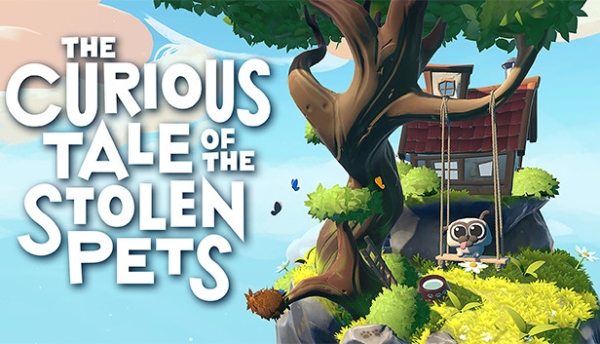



Descrizione: Il tuo compito è aiuto i detective a risolvere l'intricato mistero degli animali domestici rubati in un famoso mondo di fiabe.
Dinamica di gioco: dovrai esplorare ambienti colorati, interagire con vari personaggi e aiuto a risolvere intricati enigmi per svelare indizi. È più un'avventura spensierata, ideale per i giocatori più giovani.
10. Trainer valutazione Space Pi (Età consigliata: adolescenti dai 13 anni in su)




Descrizione: È tempo di difenderti dalle imponenti ondate di droidi nemici in questa ambientazione spaziale futuristica.
Dinamica di gioco: fai esplodere i droidi con un'ampia gamma di armi, devi deviare qualsiasi laser diretto contro di te con i tuoi scudi e schivare gli attacchi in arrivo. È sicuramente un'esperienza ricca di azione e frenetica, quindi adatta a persone di tutte le età, compresi i giovani adolescenti.
Alcuni potenziali rischi dei giochi Oculus?
Come ogni altro gioco moderno, i giochi Oculus VR presentano delle battute d'arresto, dalla dipendenza dalla realtà virtuale alla chinetosi. Ecco alcuni dei rischi più comuni di Giochi Oculus per bambini.
- Dipendenza dalla realtà virtuale. I giochi Oculus per bambini sono incredibilmente coinvolgenti e molti bambini trascorrono troppo tempo nel mondo della realtà virtuale. Ciò può portarli a trascurare altre attività del mondo reale come l’interazione sociale, il sonno o l’esercizio fisico.
- Affaticamento degli occhi e cinetosi. I giochi VR possono compromettere il tuo senso di equilibrio, provocando vertigini, nausea e mal di testa. Trascorrere troppo tempo in VR può anche causare affaticamento degli occhi.
- Contenuti inappropriati. Sebbene esistano molti giochi VR adatti all'età, è importante essere consapevoli dei contenuti a cui accedono i tuoi figli. Alcuni giochi VR promuovono la violenza, l'interazione online con estranei e persino l'esposizione a creature spaventose.
- Lesioni fisiche. I bambini possono essere sovraeccitati e perdersi nelle attività VR. Ciò può portare a dimenticare l’ambiente fisico circostante, il che può portare a sbattere contro mobili o pareti.
Suggerimenti per un gioco Oculus più sicuro e più sano per i bambini
Giocare ai giochi VR va bene se incoraggi i tuoi figli a farlo in sicurezza. Ecco le varie misure che puoi adottare per garantire la sicurezza dei tuoi figli mentre giocano ai giochi Oculus VR.
Configurazione del controllo genitori di Oculus
Ecco come configurare le funzionalità di controllo parentale di Oculus per migliorare l'esperienza di gioco e la sicurezza di tuo figlio.
Passaggio 1. Collega un account famiglia all'account di tuo figlio per messaggi più semplici.
Passaggio 2. Limitazione dei contenuti. Seleziona i filtri dei contenuti adatti all'età per limitare l'accesso ai contenuti non adatti all'età.
Passaggio 3. Imposta Limiti Di Tempo Dello Schermo. Puoi impostare l'orario in cui i tuoi figli resteranno sulla piattaforma solo durante il tempo consentito.
Passaggio 4. Passare a blocco dell'app per bloccare giochi e app specifici dal tuo punto di vista.
Utilizzo di strumenti aggiuntivi
Sebbene i giochi Oculus VR offrano straordinarie funzionalità di controllo parentale, garantire la loro sicurezza oltre ogni ragionevole dubbio è ancora più importante. FlashGet Applicazione per bambini è un controllo parentale di terze parti che può aiuto a gestire vari potenziali rischi derivanti dai giochi VR.
Blocco delle app. FlashGet Kids l'app può aiuto a bloccare l'accesso ad app specifiche, inclusi i giochi VR per bambini, dall'accesso di tuo figlio.
Gestione del tempo sullo schermo. Come affermato in precedenza, i giochi VR possono creare molta dipendenza, quindi potrebbe essere necessario controllare tutto il tempo trascorso a giocarci.
Rapporti sull'utilizzo. L'app FlashGet Kids ti consente di ricevere resoconti giornalieri, settimanali o anche mensili su un'app specifica, aiuto così i genitori a monitorare il tempo trascorso su ciascuna app.
Monitoraggio delle attività. Monitora e rivedi i modelli di utilizzo e di attività di tuo figlio per assicurarti che interagiscano con i giusti contenuti VR sui propri dispositivi.
Sicurezza fisica del gioco VR
È importante garantire la sicurezza fisica durante la sessione di gioco VR di tuo figlio per prevenire infortuni e creare un'esperienza positiva.
Assicurarsi che l'area di gioco sia libera da ostacoli come animali domestici, mobili e altri oggetti che potrebbero causare collisioni e inciampi.
Usa l'auricolare giusto. Assicurati che i tuoi figli utilizzino le cuffie giuste in base alla loro taglia ed età.
Assicurati che le cuffie siano comode e si adattino saldamente con lenti che si adattino correttamente per prevenire l'affaticamento degli occhi.
Incoraggiare le pause per prevenire l'affaticamento fisico e l'affaticamento degli occhi.
Conclusione
I giochi di realtà virtuale (VR) sono ora la nuova forma di intrattenimento per i giovani adolescenti, grazie all'esperienza educativa, divertente e creativa di cui godono i giocatori. Tuttavia, trascorrere troppo tempo sui giochi VR può rischiare che l'utente soffra di chinetosi, affatica la vista, interagisce con estranei online e persino accede a contenuti inappropriati. È quindi una preoccupazione che i genitori adottino le misure di controllo parentale sui giochi Oculus VR per bambini o su piattaforme di controllo parentale di terze parti come l'app FlashGet Kids. Ciò può aiuto a ridurre il tempo trascorso davanti allo schermo, l'accesso a contenuti inappropriati e l'interazione con estranei online .

